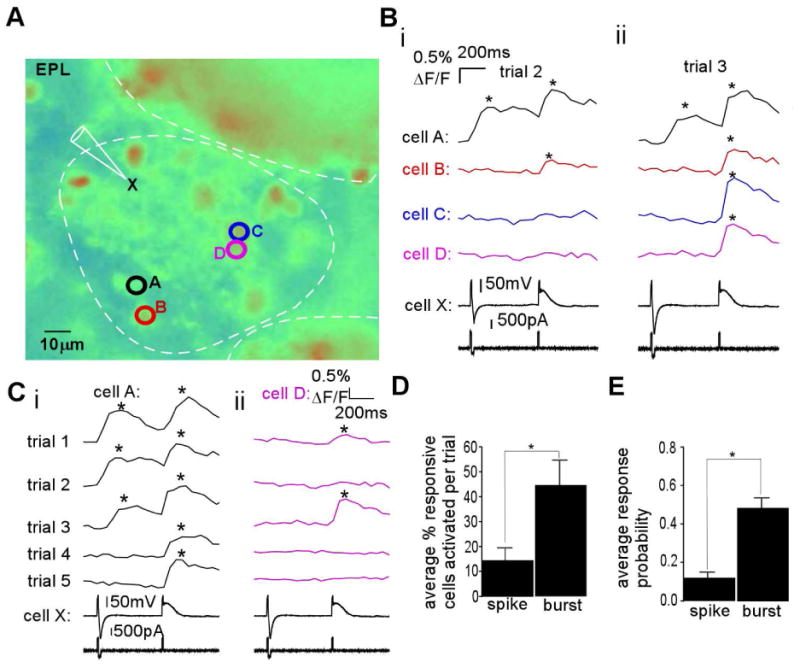Fig. 6.

An ETC burst promotes intraglomerular coactivity better than single spikes. (A) Resting fluorescence image of a Calcium Green-1 AM dye-loaded OB slice with trigger ETC X and responsive interneurons A-D indicated. (B) In a single trial, both a single spike and a burst were elicited in ETC X, separated by 500 ms (i and ii, “cell X”, at bottom), and fluorescence transients were monitored in interneurons A-D (i and ii, above electrical trace). (i) In trial 2, the spike triggered a response in cell A, whereas the plateau triggered a response in both cells A and B. (ii) In another separate trial (trial 3), the spike only triggered a response in cell A, whereas the burst triggered a response in all four cells. (C) (i) In multiple repeated trials, using the same stimulation protocol, and focusing on responses in cell A, the single spike triggered a response in 3/5 trials, whereas the burst triggered a response in 5/5 trials. (ii) For cell D, the burst elicited a response in 2/5 trials, whereas the spike was not successful in any of the trials. (D) In such experiments (n = 6 slices), the ability to coactivate multiple interneurons was calculated as the average percent of responding cells activated per trial. This value was significantly increased by burst firing vs. spike firing (*P<0.03). (E) For a given follower interneuron, burst firing in trigger ETC X was significantly more likely to elicit a response than a single spike (n = 32, *P<0.0001).
